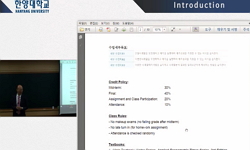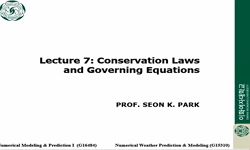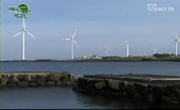본 연구는 중국 경제가 불확실성이 증대되는 가운데 중국경제의 불황 혹은 위기를 사전적으로 알 수 있는 예측도구를 개발하기 위해 사용되었다. 본 연구는 Lee et al(2016)의 미국에 대해서 진...
http://chineseinput.net/에서 pinyin(병음)방식으로 중국어를 변환할 수 있습니다.
변환된 중국어를 복사하여 사용하시면 됩니다.
- 中文 을 입력하시려면 zhongwen을 입력하시고 space를누르시면됩니다.
- 北京 을 입력하시려면 beijing을 입력하시고 space를 누르시면 됩니다.

국채장기수익률의 동태적 조건부 상관관계를 이용한 중국 실물경제예측에 관한 연구 = A predictive study of changes to China's economy using dynamic conditional correlation of long-term government bond yield
한글로보기https://www.riss.kr/link?id=A106837632
-
저자
이기영 (세종대학교)
- 발행기관
- 학술지명
- 권호사항
-
발행연도
2018
-
작성언어
Korean
-
주제어
DCC ; Predict ; Chinese Economy ; Recession ; Co-movement ; 동태적 조건부 상관관계(DCC) ; 예측 ; 중국경제 ; 불황 ; 동조화
-
등재정보
KCI등재
-
자료형태
학술저널
-
수록면
73-100(28쪽)
-
KCI 피인용횟수
0
- DOI식별코드
- 제공처
- 소장기관
-
0
상세조회 -
0
다운로드
부가정보
국문 초록 (Abstract)
본 연구는 중국 경제가 불확실성이 증대되는 가운데 중국경제의 불황 혹은 위기를 사전적으로 알 수 있는 예측도구를 개발하기 위해 사용되었다. 본 연구는 Lee et al(2016)의 미국에 대해서 진행한 논문결과가 중국에서도 유효하게 적용되는지를 검정한 후속연구로 세계 경제의 동조화가 심화된 현재에 미래 경제정보를 가지고 있는 국채장기수익률의 조건부 상관관계(Dynamic Conditional correlation)를통해서 중국 경제예측력을 검정해보았다.
표본 내 예측결과 글로벌 요인과 지역요인의 동태적 조건부 상관관계는 모두 Term Spread, PMI, 선행지수를 통제해도 중장기적으로 유효한 것으로 나타났으며, 표본외 예측결과에서는 지역요인이 단기적으로 Term Spread보다 우월한 예측력을 갖는 것으로 나타났다. 이를 통해 중국경제는 지역요인의 조건부 상관관계를 통해주로 단기적 예측을,
다국어 초록 (Multilingual Abstract)
This study is intended to develop a prediction tool with which an economic depression or crisis of the People’s Republic of China while the uncertainty of the Chinese economy has increased. In this study as a follow-up one which tests if the study r...
This study is intended to develop a prediction tool with which an economic depression or crisis of the People’s Republic of China while the uncertainty of the Chinese economy has increased. In this study as a follow-up one which tests if the study results conducted by Lee et al. (2016) in the USA may be able to applied effectively to the Chinese economy, the prediction capability of the Chinese Economy was tested by having used the dynamic conditional correlation between many long-term government bond yields that hold the future economic information at the time of the present when the synchronization of the economies of many countries over the world has been deepened. As the results from the In Sample test, it was found that the dynamic conditional correlations caused by the global and regional factors were effective from the middle- and long-term views even though the term spreads, PMIs and the relevant leading economic indexes were controlled. As the results from the Out of Sample test, for predicting the Chinese economy, it was found that the regional factors have a superior prediction capability than the term spread in a short term. Accordingly, it seems that it is rational to conduct a short-term prediction mainly by examining the dynamic conditional correlation between the regional factors and to do a middle- or long-term prediction by checking the term spreads.
참고문헌 (Reference)
1 朱世武, "利率期限结构对通货膨胀预测能力的实证分析" 10 : 2005
2 郭涛, "中国利率期限结构的货币政策含义" 3 : 2008
3 Jotikasthira, C., "Why do term structures in different currencies co-move?" 115 (115): 58-83, 2015
4 Kulish, M., "The yield curve in a small open economy" 85 (85): 268-279, 2011
5 이기영, "The long-term interest rates correlations: a new indicator predicting recession" 한국무역학회 20 (20): 259-280, 2016
6 Bhanupong, N., "The ASEAN business cycle and China’s slowdown" 52 (52): 192-209, 2015
7 Wright, J. H., "Term premia and inflation uncertainty: Empirical evidence from an international panel dataset" 101 (101): 1514-1534, 2011
8 이기영, "Term Spread의 중국실물경기 예측력연구-PMI및 선행지수와의 비교를 중심으로-" 한중사회과학학회 15 (15): 71-96, 2017
9 이기영, "Term Spread의 중국경기예측력에 관한 연구" 중국연구소 64 : 215-242, 2015
10 Yan, "THE SOVEREIGN YIELD CURVE AND THE MACROECONOMY IN CHINA" 20 (20): 415-441, 2015
1 朱世武, "利率期限结构对通货膨胀预测能力的实证分析" 10 : 2005
2 郭涛, "中国利率期限结构的货币政策含义" 3 : 2008
3 Jotikasthira, C., "Why do term structures in different currencies co-move?" 115 (115): 58-83, 2015
4 Kulish, M., "The yield curve in a small open economy" 85 (85): 268-279, 2011
5 이기영, "The long-term interest rates correlations: a new indicator predicting recession" 한국무역학회 20 (20): 259-280, 2016
6 Bhanupong, N., "The ASEAN business cycle and China’s slowdown" 52 (52): 192-209, 2015
7 Wright, J. H., "Term premia and inflation uncertainty: Empirical evidence from an international panel dataset" 101 (101): 1514-1534, 2011
8 이기영, "Term Spread의 중국실물경기 예측력연구-PMI및 선행지수와의 비교를 중심으로-" 한중사회과학학회 15 (15): 71-96, 2017
9 이기영, "Term Spread의 중국경기예측력에 관한 연구" 중국연구소 64 : 215-242, 2015
10 Yan, "THE SOVEREIGN YIELD CURVE AND THE MACROECONOMY IN CHINA" 20 (20): 415-441, 2015
11 박영준, "Regional Business Cycles in East Asia: Synchronization and its Determinants" 대외경제정책연구원 17 (17): 103-128, 2013
12 Swanson, E. T., "Measuring the effect of the zero lower bound on yields and exchange rates in the U.K. and Germany" 92 (92): S2-S21, 2014
13 Kose, M. A., "International business cycles: world, region, and country-specific factors" 93 (93): 1216-1239, 2003
14 Dahlquist, M., "International bond risk premia" 90 (90): 17-32, 2013
15 Berdiev, A. N., "How synchronized is China with the other Asia-Pacific countries?" Bryant University Center for Global and Regional Economic Studies 2013
16 Das, D. K., "Foreign direct investment in China: Its impact on the neighbouring Asian economies" 6 (6): 285-301, 2007
17 Zhou, "Forecasting Macro-economy Based on the Term Structure of Credit Spreads: Evidence from China" 2013
18 Engle, R. F., "Dynamic conditional correlation: A simple class of multivariate generalized autoregressive conditional heteroscedasticity models" 20 (20): 339-350, 2002
19 Chin, M., "Cross-country comovement in long-term interest rates: A DSGE approach" Bank of England 2015
20 Hirata, H., "Closer to home" 50 (50): 40-43, 2013
21 Dai, Y., "Business cycle synchronization in Asia: The role of financial and trade linkages" ADB 2014
22 Song, L. L., "Business cycle co‐movement between Australia and East Asia" 44 (44): 427-436, 2011
동일학술지(권/호) 다른 논문
-
문명제국 중국의 부상과 중국연구의 새로운 패러다임 전인갑: <현대중국의 제국몽: 중화의 재보편화 100년의 실험>(2016)
- 한양대학교 아태지역연구센터
- 이문기
- 2018
- KCI등재
-
- 한양대학교 아태지역연구센터
- 안상욱
- 2018
- KCI등재
-
‘중국 특색의 세계화 전략’에 대한 재중 아프리카 유학생들의 인식조사
- 한양대학교 아태지역연구센터
- 함명식
- 2018
- KCI등재
-
중국의 ‘글로벌 거버넌스 체제 개혁’ 추진의 의미와 영향
- 한양대학교 아태지역연구센터
- 이동률
- 2018
- KCI등재
분석정보
인용정보 인용지수 설명보기
학술지 이력
| 연월일 | 이력구분 | 이력상세 | 등재구분 |
|---|---|---|---|
| 2026 | 평가예정 | 재인증평가 신청대상 (재인증) | |
| 2020-01-01 | 평가 | 등재학술지 유지 (재인증) |  |
| 2017-01-01 | 평가 | 등재학술지 유지 (계속평가) |  |
| 2013-01-01 | 평가 | 등재 1차 FAIL (등재유지) |  |
| 2010-01-01 | 평가 | 등재학술지 유지 (등재유지) |  |
| 2008-01-01 | 평가 | 등재학술지 유지 (등재유지) |  |
| 2005-01-01 | 평가 | 등재학술지 선정 (등재후보2차) |  |
| 2004-01-01 | 평가 | 등재후보 1차 PASS (등재후보1차) |  |
| 2003-01-01 | 평가 | 등재후보학술지 유지 (등재후보1차) |  |
| 2002-01-01 | 평가 | 등재후보학술지 유지 (등재후보1차) |  |
| 2000-07-01 | 평가 | 등재후보학술지 선정 (신규평가) |  |
학술지 인용정보
| 기준연도 | WOS-KCI 통합IF(2년) | KCIF(2년) | KCIF(3년) |
|---|---|---|---|
| 2016 | 0.51 | 0.51 | 0.44 |
| KCIF(4년) | KCIF(5년) | 중심성지수(3년) | 즉시성지수 |
| 0.39 | 0.43 | 0.604 | 0.34 |




 KCI
KCI







